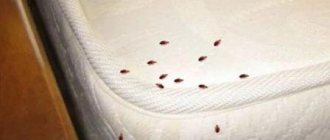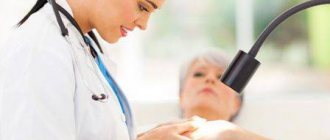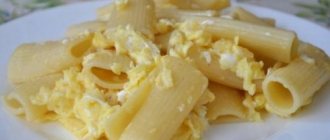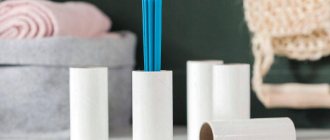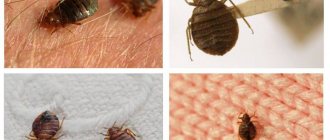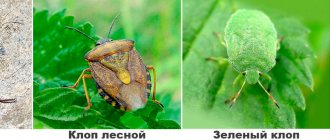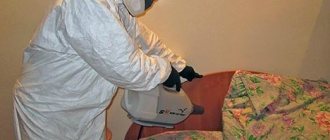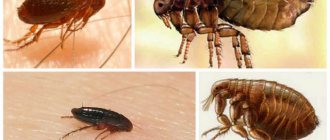If redness and an itchy rash are detected on the skin, it is necessary to exclude linen lice bites. Small blood-sucking parasites are easily carried on clothing and are well camouflaged in underwear and bedding. The problem can be encountered after visiting a hotel, a hospital ward, or a holiday in a children's camp. Therefore, it is recommended to know the symptoms and treatment features, and remember the rules of prevention at home.
Causes of insects
Linen or body lice are one of the most common subspecies, which are collectively called Pediculus humanus corporis. These are the closest “relatives” of pubic and head parasites that live among human hair. They cannot be constantly on the skin, preferring to settle in colonies on clothing. Favorite places are tight seams, folds and borders. Most often, the parasite is detected on natural fabrics with a high content of wool or linen thread.
The body louse, like the head species, is miniature in size, reaching no more than 3 mm in length. The long and translucent body is difficult to discern among the hair or particles of the epidermis. They do not have wings, but develop a unique jumping ability, which allows them to quickly migrate to new areas. You may encounter them in the following situations:
- In close contact with an infected person (intimate contact, hugs).
- When using someone else's clothes, dressing gown, T-shirt.
- In cramped transport, at work in a team.
- When placing an infected item on a common hanger or closet.
- In the pool, public sauna, during procedures in the hospital.
Fans of hotel holidays are familiar with bed lice, whose bites ruin their holiday. They should not be confused with bedbugs: insects differ not only in size, but also in the method of destruction, processing of skin and surrounding objects.
Important! Lice easily tolerate the absence of food for several days and remain viable when transporting packaged items. Therefore, it is not always possible to establish the source of infection or associate it with a trip or personal meeting.
How to spot insects
Parasitic insects can be easily recognized by their appearance. They differ from bed bugs in that they are smaller and much lighter in color. From fleas - because they cannot jump, but can only run. And from ticks - because they have a different structure and number of limbs, which is undoubtedly visible even with the naked eye.
Body lice differ from other parasitic insects in that they are constantly found directly on the human body, on his clothes and accessories. They feed only on blood, and lice can most often be found on clothing by examining the underside of clothing items. Therefore, these insects have a couple more names. These are body lice and linen lice.
It is worth noting that parasitic insects are quite picky in choosing their habitat . They will fit perfectly on cotton and woolen materials, but will be indifferent to silk or satin clothes. And they coexist only with those people who constantly wear the same things. Since body lice feed three to four times a day, they simply cannot survive on clothes in the closet for several days.
How to recognize linen lice bites
Even clean people who monitor their health and the condition of their personal belongings face this problem. After a vacation or a trip to visit relatives, they discover rashes on the skin that are itchy and cause them to itch constantly. This is often associated with allergies to detergents, climate change or new foods. Those who do not know what linen lice bites look like should take a closer look at the following signs:
- Areas without strong hair are affected (lower back and buttocks, neck, upper back, abdomen).
- The itching intensifies upon contact with clothing.
- After scratching, lumps and sores remain.
- Insects actively crawl on the skin, so linen lice bites on a person are located in the form of a line or path.
Unlike an allergic reaction, red spots do not disappear after taking antihistamines. When examined under a magnifying glass, it is easy to distinguish the site of a linen louse bite, which resembles a point on the skin.
Description of the parasite
The linen louse, or as it is also called the body, bed or clothes louse, is an insect whose translucent smooth body is up to 0.5 cm. Females are much larger than males. The parasite's head, which is small in comparison with its belly, has thin antennae.
The body color of the parasite can vary depending on the degree of saturation:
- in a state of hunger, the insect is gray in color;
- It turns red-brown after being saturated with human blood.
Answering the question of what linen lice look like, it is worth noting that a satiated insect increases in size, becoming like a flea. A distinctive feature of the latter pest is its jumping ability. The linen louse can only crawl. The paws help her in this, with the help of which she is fixed in the pile of fabrics.
On a note!
Linen lice are very hardy insects. Despite the fact that under the influence of low temperatures the growth and life cycle of insects slows down, this type of parasite can even tolerate washing. It is for this reason that the boiling method has become one of the methods of pest control.
Unlike head lice and pubic lice, which are also called flat lice, linen lice do not live in hair. Bed parasites live in the seams of underwear. Without access to the human body, they can exist for no more than 2 days, if there is a food source for about a month. They prefer dirty items made from natural fabrics (linen, cotton). Parasites do not like slippery and synthetic fabrics.
Consequences of contact with parasites
Many people don't even realize that body lice bites pose a health hazard. They can bite a person infected with a serious disease and transmit it further. In addition, the insect injects a special substance under the epidermis that anesthetizes and contains antibodies foreign to the human body.
If linen lice bite, the consequences may be:
- Infection in the wound after scratching, suppuration and the appearance of non-healing erosions.
- Insomnia and the development of neurosis with prolonged contact with parasites.
- Characteristic marks that cause embarrassment, forcing one to refuse communication with the opposite sex.
- An allergic reaction that intensifies and threatens with swelling, weakness, and drowsiness.
If lice bites on the skin do not heal for a long time, scarring begins, leaving unflattering scars with a bluish rim.
Why lice bites are dangerous and how to quickly relieve itching
The problem with lice is not only the itching, but also the accompanying problems that this disease causes, namely:
- Constant itching causes irritability and negatively affects the nervous system.
- Deterioration of hair condition when it comes to pediculosis.
- Insomnia caused by itching. As a result, the person is constantly tired and cannot concentrate on work.
- Scratching leaves scratches, which open the door to other diseases and also lead to other skin problems.
- The substance that parasites inject to prevent the blood from clotting causes allergies.
- Lice are carriers of many diseases, including typhoid fever.
- We should also highlight pubic lice, which can transmit sexually transmitted diseases, including syphilis and gonorrhea, due to their constant contact with blood.
To relieve itching, it is recommended to treat the wound with alcohol and a special soothing ointment for bites. As a last resort, you can use regular soap, preferably baby soap. This will clean the bite area and tighten the wound slightly.
How to treat linen lice bites and consequences
At the first suspicion of contact with parasites, you should consult a dermatologist. He will help make sure there is no infection or allergy and will select the medications necessary for treatment. The doctor will explain how bed lice bite so the patient can determine the cause of their rash. At home, the affected areas can be treated:
- Any ointment containing the hormone hydrocortisone. It will reduce the risk of swelling and allergic reactions, and reduce discomfort.
- Hydrogen peroxide applied to a cotton swab as an antiseptic.
- Homeopathic remedies containing tea tree oil, eucalyptus, calendula.
- Fenistil gel, which relieves acute itching.
If purulent rashes appear and infection is suspected, the doctor may recommend a course of antibiotics: Doxycycline, Cefuroxime, Lincomycin. The specialist selects how to lubricate the bites from linen lice: 2-3 times a day, wipe the rashes with antiseptic solutions based on Chlorhexidine or Miramistin, rub in Levomekolev ointment. Antihistamines that act for 12–24 hours help relieve itching at night: Zodak, Suprastin, Telfast.
An anti-linen lice spray will help stop the infestation of parasites. These are universal products that affect all types of insects that attack the body and hair:
- Para Plus,
- Lavinal,
- Pediculen,
- Paranit.
Alcohol tinctures of propolis, calendula or St. John's wort disinfect the epidermis well. Patients are advised to wash with baby or laundry soap and temporarily avoid gels with fragrances. Every evening you can take baths with the addition of sea salt. A decoction of chamomile, sage, celandine and oak bark, which is added when bathing, relieves burning and itching.
Head lice
Head lice is currently the most common disease among residents of our country. Outbreaks of the disease are observed during the period of children returning from places of public recreation - pioneer camps, dispensaries, camping sites.
This is a small insect that lives only on the scalp. In males it can parasitize on the mustache and ford. Lice do not fly or jump; they move with the help of six tenacious legs, crawling over short distances. The body of the parasite is elongated, up to 4 mm long, transparent or light brown. Lice eggs are called nits. The head louse attaches them to the host's hair somewhere at a distance of about 2 cm from the roots. Nits look like white translucent capsules 1–2 mm long. They can be mistaken for dandruff, but you won’t be able to shake nits off your head.
The lifespan of an adult is 45–50 days. Under suitable conditions, the eggs mature in a short time, and the larva appears already on days 4–5, and reaches sexual maturity after 14–21 days. One female lays about 300 nits during her life.
Where do head lice come from and how are they transmitted from one person to another? There are several possibilities for infection:
- upon contact with a patient;
- through hair care items - combs, combs, elastic bands, etc.;
- through bed linen;
- while swimming in a pool, lake or river.
Children are more susceptible to head lice; it often appears in preschool institutions and summer camps. The disease is detected visually when nits are seen when looking at the hair on the head.
What are head lice afraid of and how to get rid of them?
How to get rid of head lice and treat bites
The pharmacy sells a wide range of insecticides aimed at killing head lice. Here is a list of the most common drugs belonging to the category of pediculocides (remedies for lice and nits):
- mercury ointment;
- Medifox;
- hellebore water;
- "Pair plus";
- "Lauri";
- "Nittifor";
- "Knicks".
To treat bites, you can use boric ointment or Butadione. When purchasing the drug, be sure to read the instructions on how to treat head lice with it.
Some products do not affect nits, so they must be applied several times to destroy the hatched larvae. In any case, after removing lice, it is better to comb out the nits from the hair using a small comb dipped in a solution of table vinegar (diluted with water 1:1).
A fairly labor-intensive, but safe way to get rid of head lice at home is to comb out the adult parasites with a fine comb, and after 3-4 days dry the hair with a hot hairdryer, thus destroying the hatched larvae. Continue drying as long as the itching persists.
Simultaneously with the destruction of head lice, you need to boil or thoroughly iron all bedding and personal clothing, and check other family members.
Ways to get rid of lice
Treatment will help relieve acute symptoms, but the problem will disappear only after the destruction of dangerous insects. There are many effective ways to get rid of lice at minimal cost:
- All bedding should be washed with hot water and laundry soap and thoroughly ironed on each side.
- Clothes from the closet are hung out in the sun for several days. In winter, you can use a steam cleaner.
- Bulky items and blankets are taken to the dry cleaner for professional treatment with detergents.
- Personal household items and combs can be wiped with Chlorhexidine.
- The apartment undergoes general cleaning with disinfection of all surfaces, door handles, and steam treatment of the mattress. It is better to order it from specialists of a cleaning company.
Within a week, after taking a shower, the towel is changed to a clean one and soaked in boiling water. When washing floors in your home, you can add Karbofos solution to the water. It destroys lice at any stage of development. If the recommendations are followed, arthropods die within 5–7 days.
Effective means to combat linen lice
And now directly about the products that should be used when processing laundry:
A-par
This is perhaps the most effective drug. Its developers claim that it can get rid of not only lice, but also nits. Sold in aerosol form. It consists of two active components - Piperonibutoxide and Esdepalletrin. Before using the drug, things should be washed in the manner indicated above, after which the drug is sprayed over the entire surface of the clothing.
Akromed
The main active substance of this drug is Permethrin. It also contains kerosene, but there is no need to worry about the appearance of a characteristic odor. The drug is sold in the form of an emulsion, four liters of which is enough to treat 1 kilogram of things.
Forsyth
It is also a very effective drug, the main active ingredients of which are Permethrin and Fenthion. Sold in the form of an emulsion that requires preliminary preparation. 20 ml of the drug is diluted in a liter of water. To process a kilogram of things you will need 4 liters of ready-made solution. The treatment procedure requires repeating after a week.
Avicin
Active substance – Permethrin. To prepare the solution, take 1 part emulsion and 100 parts water. Soaking time for contaminated items is 25 minutes.
Celandine
The active substance of this drug is the same Permethrin. The drug is sold in the form of an emulsion, ready for use.
Prevention
Preventing body lice bites helps prevent head lice and complications. After going on vacation or a business trip, all things and underwear should be washed in hot water. When regularly visiting high-risk areas, the hair and skin on the body are lubricated with special solutions: Nittifor, Pedilin, Nyuda. To protect clothes, you can put a cotton pad soaked in lavender oil and hellebore water in a suitcase or closet.
When traveling regularly, it is recommended to take a set of bed linen with you, wash your hands more often and take a hot shower. Women should carefully choose a cosmetologist and hairdressing salon, pay attention to the disinfection of equipment, and the availability of a health certificate from the master.
Cootie
Body louse is also called linen or body louse. If hygiene rules are observed, the disease is extremely rare. In their mode of parasitism, body lice are similar to bedbugs. They prefer to live in the folds and seams of linen and clothing, crawling onto the human body only to drink blood. Body lice bites are often mistaken for irritation or allergies, or bites from other insects. Dots and small pimples with a diameter of 2–4 mm and severe itching appear on the stomach, shoulders and buttocks. An allergy to lice bites often develops, accompanied by severe redness and swelling of the skin at the site of injury.
The body louse lays eggs on linen, gluing them to the fibers of the fabric.
Linen lice bites can become infected and cause pustular skin diseases. This parasite also serves as a carrier of infectious agents - typhus and other rickettsial diseases.
You can catch a body louse through contact with contaminated linen or clothing, often in public areas:
- hotels;
- summer camps;
- sanatoriums and holiday homes;
- long distance trains;
- trying on someone else's clothes.
How to get rid of body lice and how to treat bites
If bed lice bites are found on the body, it is necessary to immediately take measures to destroy the insects in the apartment. Parasites quickly colonize a new space and actively reproduce.
Disinsection of the entire body, clothing and premises is carried out.
- Wash all clothes and linen at high temperature and iron thoroughly, paying special attention to seams.
- Take a hot shower with laundry soap. Wear clean clothes. Repeat the procedure daily.
- Boil personal hygiene items and bed linen.
- Before washing, it is recommended to soak clothes and linen for 15–20 minutes in a weak solution of vinegar - this will weaken the chitinous shell of parasites and their eggs.
- To ensure that you get rid of body lice, all clothing, linen, crevices of upholstered furniture, mattresses and pillows must be treated with insecticidal agents. After washing, it is necessary to thoroughly ventilate all items.
During epidemics, guaranteed destruction of lice and their eggs is achieved by processing the material in a steam-formalin chamber.
How to treat linen lice bites? To heal skin affected by the parasite, ointments and lotions are used:
- hydrocortisone ointment;
- balm “Rescuer”;
- hydrogen peroxide - for primary disinfection.
What to do if you are bitten by lice?
Bites from linen lice, head and pubic lice must undergo certain treatment. If they cause noticeable discomfort and responses from the body, you should take the following actions:
- wash the affected areas of the skin with clean water and soap;
- treat with alcohol-containing solutions, ideally with propolis tincture in alcohol (this will eliminate the possibility of infection and at the same time slightly dry the bite);
- if inflammation has already appeared, Fenistil and the well-known Rescuer ointment will come to the rescue; severe itching will be relieved by Afloderm or Zvezdochka based on natural ingredients;
- If an allergic reaction develops, the bites are treated with Menovazin.
In cases where the body reacts extremely negatively (all symptoms are accompanied by fever, headaches and nausea), you should immediately consult a doctor. Severe forms of allergic reactions are a dangerous phenomenon for the human body, and only specific antihistamines can neutralize them. You cannot buy them without a doctor's prescription.
